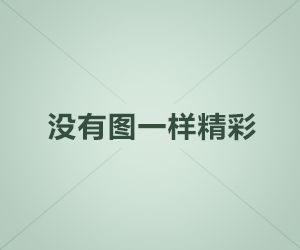在古代是如何治疗癫痫的配图,仅供参考
3. Use of Natural Products in Countries Where Traditional Medicine Is Widely PracticedThe CAM therapies found in regions with widely practiced forms of traditional medicine are generally much more diverse than in countries with a strong western-based type of medical system. This diversity may arise from the relatively lower financial resources of patients in addition to the availability of and access to traditional medicine systems. For example,in sub Saharan Africa,limited financial resources restrict access to western-style medicine,and most persons live very traditionally,with mystical beliefs influencing their day-to-day lives and affinity for traditional healers. There are notable exceptions,such as high-income countries like South Korea and Japan with well-developed systems of traditional medicine practiced alongside western-style medicine.
Ayurveda and TCM are among the best known systems of traditional medicine. Ayurveda originated thousands of years ago and continues to be widely practiced in South Asia,especially in India. TCM is widely practiced and carefully regulated by the Chinese government. The Kampo system in Japan,as well as Korean Oriental Medicine (KOM),are derived from TCM and remain broadly similar.
Ayurveda—This is the oldest known system of medicine,developed by the ancient Hindus,and based on balancing the three elements (vata,pitta,kapha) in the human body. Epilepsy (Apasmara) is considered a mental disease and classified into four types,three with predominant involvement of each of the three elements and a fourth characterized by combined involvement of all three. Although some characteristics of seizures as defined in western medicine also appear in Ayurvedic writings,there are differences in how seizures are recognized between these two systems. Treatment usually starts with drastic cleansing of the body through emesis,enemas and purgatives,followed by different Ayurvedic drug formulations. Additional Ayurvedic drugs are then recommended for use and are administered by various ways: orally,by nasal or ocular application,anointing the body or by fumigation .
Ayurvedic practitioners prescribe PWE mixtures of natural products,containing herbal extracts,as well as animal ghee,honey and milk. The most widely used herbal extracts are prepared from Acacia arabica,Acorus calamus,Bacoppa monnieri,Clitorea turuatea,Celastrus panniculata,Convulvulus pluricaulis,Emblica officinalis,Mukta pishti,Whithania somnifera,and Vaca brahmi yoga .
TCM—This medical system concerns the study of human physiology and pathology,and the prevention,diagnosis and treatment of human diseases,and dates back more than 2500 years . The theory of TCM for PWE is difficult to understand from a western perspective because of the TCM approach to diagnosis and treatment,and the related principles of holism and differentiation. Four subtypes of epilepsy are recognized,but,as is the case with the classification of seizures in Ayurveda,they do not match directly to the ILAE classification of seizures and epilepsies. Treatments typically involve mixtures of different herbal extracts (each containing many active compounds),some to directly treat the seizure disorder and others to maintain the general wellbeing of the host. The treatment may be applied in three phases. First,seizures are treated by herbs and acupuncture; then,herbs,acupuncture and moxibustion are used for tonic strengthening of organs; and finally,daily life guidelines are recommended to prevent relapse .
The most frequently used herbal medicines in the published clinical epilepsy literature from the Far East are Pinella ternate,Arisaemi japonicum,Acorus calamus,Gastrodia elata,Buthus martensii,Poria cocos,Bombyx bartryticatus,Citrus reticulate,Uncaria rhynchophylla,Glycyrrhiza glaba,Salivae miltiorrhizae,Scolopendra subspinipes,Bupleurum falcatum,Succinum,Paeonia albiflora,Panax ginseng,Perichaeta communissma and Curcuma longa . However,as mentioned earlier,there is insufficient evidence at the present time to recommend the use of TCM for treatment of epilepsy . Nevertheless,extracts used for seizure control in TCM,as well as single compounds derived from these extracts,are being tested alone and in combinations for anticonvulsant effects in animal models of epilepsy.
Sub-Saharan African practices—In this region of the world,there is no widely practiced traditional medical system,such as TCM. Individual local healers acquire their skills from their teachers of the previous generation and different healers may have different approaches to the diagnosis and healing processes as well as a different array of therapeutic products. Although heredity is acknowledged as an etiologic factor,epilepsy is frequent thought to be contagious or provoked by witchcraft,and burns are considered a sign of intractable disease . Some healers only recognize epileptic seizures as those that would be classified in the west as generalized tonic-clonic seizures,whereas others may use broader definitions . Treatments are based on spiritual measures and natural products derived from herbs and animals that naturally exhibit behavior resembling convulsions or loss of consciousness.
Tens of botanicals have been reported to be used in the treatment of epilepsy in different parts of sub Saharan Africa,by oral delivery,inhalation and topical application. However,there is inadequate study of these treatments to understand their relative frequency of use,efficacy and adverse events.","department":"
- 上一篇: 扁桃腺炎怎样治疗
- 下一篇: 结石性胆囊炎怎样治疗

